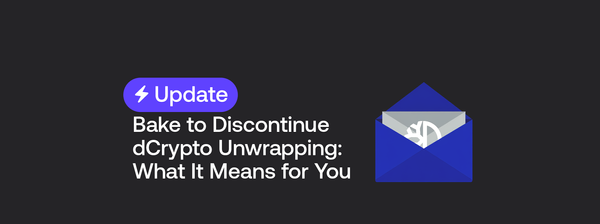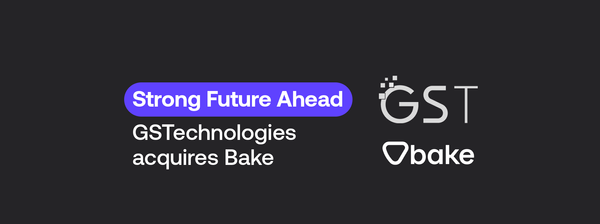What Is Arbitrum (ARB) and How Does it Solve Ethereum’s Scalability Issue?
Ethereum, the leading platform for decentralized applications and smart contracts, faces significant scalability challenges.
At the time of writing, the Ethereum network can only handle about 15-40 transactions per second, with an average gas fee of $1.50 per transaction.
These issues have greatly hindered innovation on the network, with users and developers often deterred by high costs and slow processing times.
This has prompted an ongoing quest to scale Ethereum and help make way for innovations to flourish — without sacrificing Ethereum's foundational principles.
One such solution is Arbitrum, a layer 2 solution designed to enhance transaction throughput and reduce fees while leveraging Ethereum's established security and decentralization.
In this article, you’ll discover how Arbitrum works, how it compares to other scalability solutions, and how you can get your hand on ARB, the Arbitrum network’s governance token.
How Does Arbitrum Solve Ethereum’s Scalability Issue?
The key to Arbitrum’s scaling potential is its use of Optimistic Rollup (OR) technology. ORs allow for the batching (or “rolling-up”) of transactions, executing them off the main Ethereum chain.
This method is designed to reduce the workload on the Ethereum mainnet. Instead of Ethereum needing to process each transaction individually, Optimistic Rollups allow Arbitrum to execute a combined batch of transactions off-chain and only send the final state this batch is posted back to the Ethereum mainnet for validation.
Optimistic Rollups operate under the assumption that most transactions are valid, only executing a more intensive verification process in case of disputes. This means that transactions are presumed to be honest unless proven otherwise, streamlining the validation process. In the event of a dispute, the rollup can perform a more detailed computation to verify the legitimacy of the transaction, ensuring the integrity of the network while maintaining efficiency.
This process reduces gas fees and optimizes block space by storing only the necessary data on the Ethereum blockchain. As Ethereum still serves as the ultimate confirmation layer, all transactions inherit the same level of security as any other transaction processed on the network.
The Four Pillars of Arbitrum
Arbitrum operates via a network structure that relies on four fundamental roles and mechanisms: virtual machines (VMs), verifiers, managers, and keys.
Virtual Machine (VM)
At the core of Arbitrum's architecture is its Virtual Machine (VM). The Arbitrum VM is a set of codes that define the operation of the network. It is essentially the engine that runs the smart contracts and processes transactions. The VM is designed to be highly compatible with Ethereum's Virtual Machine (EVM), allowing for seamless integration and execution of Ethereum-based smart contracts.
Verifier
Verifiers are responsible for maintaining the integrity of the Arbitrum network. They are either a distributed protocol or a global entity tasked with checking the legitimacy of transactions processed by the VM. They play a crucial role in ensuring that each transaction adheres to the network's rules and smart contract stipulations. This function is vital for preventing fraudulent activities and sustaining the trustworthiness of the network.
Manager
Managers are the “administrators” of the Arbitrum network, overseeing the progress and functionality of a VM. They ensure that the VM operates efficiently and according to the network's predefined rules. The manager's role is essential for the smooth operation and regulation of the network's core computational processes.
Key
The key is a protocol member capable of owning currency and proposing transactions. It uses the hash of the public key as an identifier and can propose transactions by signing them with the associated private key. This role is fundamental in executing transactions and allowing the movement of assets within Arbitrum and between the Arbitrum and Ethereum networks.
How Is Arbitrum Different From Other Scaling Solutions?
Arbitrum vs. Other Layer 2s
Arbitrum stands out from other Layer 2 solutions with its unique approach to data storage and transaction processing, offering a balance between speed, cost, and security.
However, as with any technology, there are trade-offs, and Arbitrum's reliance on Optimistic Rollups may present challenges in the dispute resolution timeframes compared to other methods like ZK-rollups.
Arbitrum vs. Optimism
The Optimism Network is another Layer 2 solution that uses Optimistic Rollup technology. It offers many of the same features as Arbitrum, and both ecosystems serve a similar functionality.
The key difference between the two is how they go about security and dispute resolution. Arbitrum employs a multi-round fraud proofing system for validating transactions, which is conducted off-chain. This is in contrast to Optimism's model, which uses single-round fraud proofs executed on Layer 1.
Arbitrum’s approach is generally considered to be more advanced than Optimism's simpler approach. However, both networks are robust and have a thriving ecosystem of dApps and a dedicated developer community.
What Is Arbitrum Nova?
Arbitrum Nova is a unique solution that extends the capabilities of the Arbitrum ecosystem. It is an alternate solution to the main Arbitrum network tailored for specific use cases that demand high efficiency and low transaction costs.
Nova operates under the same fundamental technology as Arbitrum, utilizing Optimistic Rollup technology. However, it introduces a different data availability system known as “AnyTrust technology.”
This technology is designed to further reduce costs and increase efficiency by relying on a set of designated data availability committees. These committees are responsible for ensuring that data is available for users and smart contracts without the need to post all data on the Ethereum blockchain.
It essentially makes the validation process slightly more centralized in order to improve scalability and reduce costs. It is a solution for applications where the highest level of security and decentralization is not a critical requirement.
Arbitrum Nova's approach is particularly beneficial for applications that generate a high volume of small transactions. By reducing transaction costs and improving throughput, Nova makes it feasible for these types of applications to operate on a blockchain platform without incurring prohibitive fees.
The ARB Token
The ARB token is the native ERC-20 governance token for the Arbitrum blockchain. It plays a pivotal role in the Arbitrum ecosystem, serving multiple key functions:
Governance Voting
Token holders can participate in governance voting through the Arbitrum DAO, impacting decisions regarding fund allocation, ecosystem investments, and technical changes. This democratic process ensures transparency and community involvement in the network's evolution.
Security Council Elections
ARB token holders also have the authority to vote on electing members of the Security Council. This 12-member team is responsible for managing the Arbitrum ecosystem's treasury wallet, playing a crucial role in maintaining the network's security and integrity.
Tokenomics
The initial supply of ARB tokens is set at 10 billion, with a maximum annual inflation rate of 2%. This controlled inflation ensures a gradual increase in the token supply. The distribution of these tokens includes allocations to investors, DAOs within the Arbitrum ecosystem, individual wallets, the DAO treasury, and the team. All allocations are subject to change based on decisions made by the Arbitrum DAO, the decentralized governance body of the network.
Join the Scalability Race With Arbitrum
Arbitrum is at the forefront of scalability solutions for Ethereum. Its use of Optimistic Rollups and constant innovation with solutions such as Arbitrum Nova make it possible for a new wave of blockchain applications to thrive.
You can purchase your first ARB token via Bake’s “Ethereum's Scaling Race” Bundle, where ARB is bundled with Optimism (OP) and Polygon (MATIC), diversifying your investment over the three major projects providing scalability solutions for Ethereum.
DISCLAIMER: Please note that the information on this blog and in any articles posted on this blog is for general information only and should not be relied upon as financial advice. Cake Pte. Ltd., Bake, UAB, and its affiliates (the “Cake Group”) are not licensed financial advisers. You may wish to approach your own independent financial advisor before making any decision to buy, sell or hold any product and/or digital assets mentioned in this blog.
Any views, opinions, references, assertions of fact and/or other statements are not necessarily the views held by the Cake Group. The Cake Group disclaims any liability whatsoever that may arise out of or in connection with such statements. Always do your own research before investing in any financial assets and consult a qualified financial advisor if necessary.




